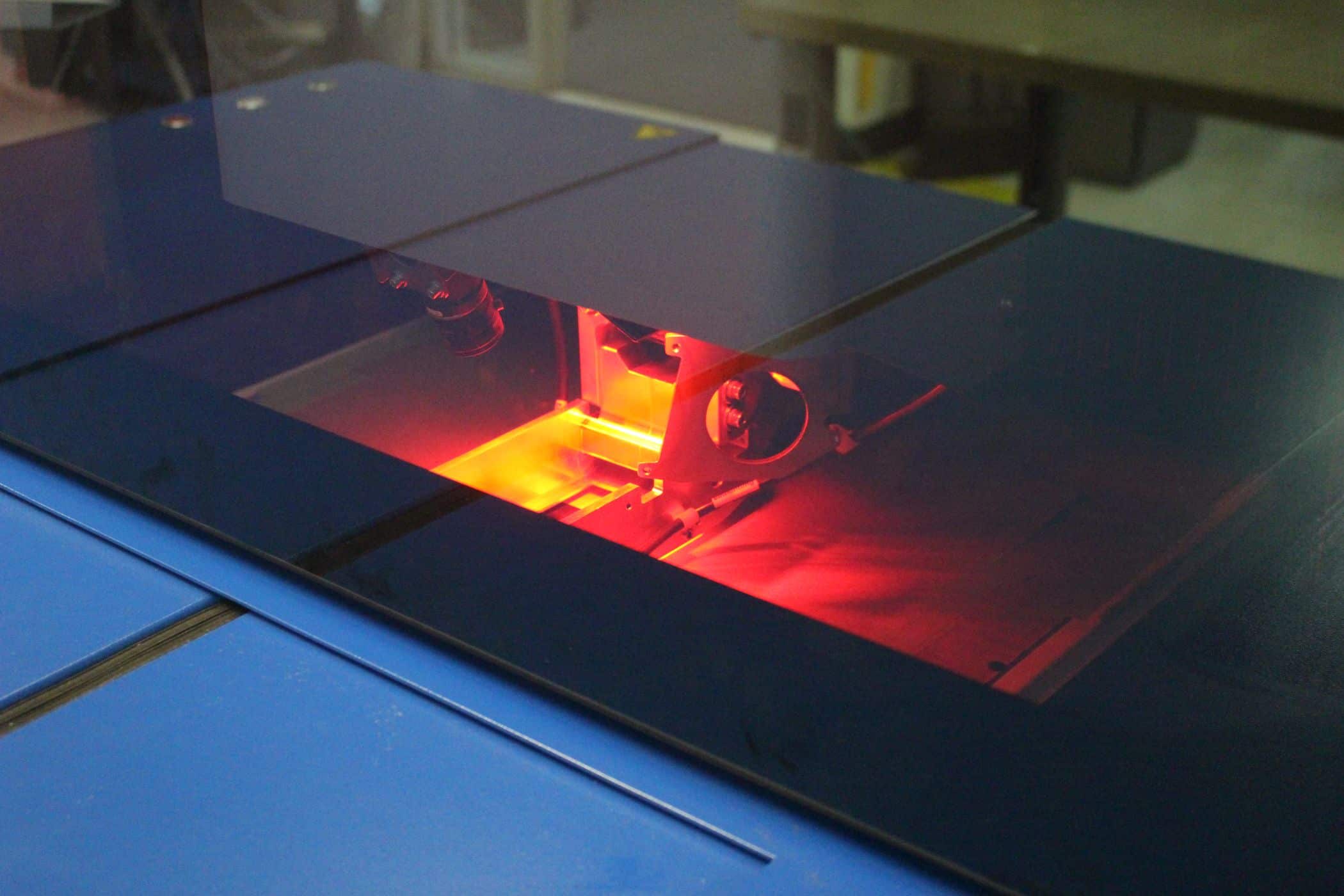Laser Routing High Tolerance Repeatability with No Delamination
There are multiple techniques by which lasers are used during the fabrication process of different projects.
The term laser machining is loosely used to encompass those techniques. The truth of the matter is that laser fabrication, whether be it machining or laser drilling, is divided into two main techniques, material removal by melting or material removal by ablation.
Those two techniques depend completely on the type of laser beam being used. Assuming that we’re talking about a pulsed laser beam in both cases. The difference between melting and ablation will be dependent on the frequency and wavelength of the laser beam. Moving away from the generation methods for the laser beam and keeping things simple, IR laser systems remove materials by melting while UV laser systems remove materials by ablation.

What is laser routing with ablation?
To clarify the difference between the two techniques, laser ablation is the process of removing material from a solid surface by irradiating it with a laser beam. The material is heated by the absorbed laser energy and evaporates or sublimates.
So, in essence, it is still melting but due to the speed at which the beam is applied to the material while concentrating the high energy of the beam at those spots.
The melting happens so fast it’s almost like mini explosions are occurring on the surface of the material.
Have questions on laser routing? Speak with our experts.
This results in ripping the material bonds apart; turning it into a gas that can easily be removed without going into the liquefaction stage, and during which the material has a chance to redeposit and cool down after mixing with any contaminants present at the cut location at that time.
The through cut contouring process used to create parts for a wide variety of industries is at the core of our laser cutting services. We work with metals in thicknesses between .001”- .025” and non-metals between .001” and .060”.
We minimize heat effect and material deformation in ultra-thin materials. We also power up to work with thicker materials while still minimizing taper. The power density, repetition rates, and high collimation achieved in the laser systems set our UV laser routing process at a next level.
What quality standards does A-Laser use for laser routing?
Through utilization of state of the art UV and IR frequency laser systems, our laser cut parts meet the highest quality standards:

+/- .0005″ tolerance repeatability, no delamination

Clean, burr-free cuts, no shape limitations

Allows for the vaporization of materials rather than burning through

Cleanliness of parts
How does laser routing work for your materials?
Materials that have gone through UV laser routing lack the carbon residue left over from processes introducing significant heat in larger areas for greater amounts of time.
Our ability to put 11 watts of power into a laser beam that is less than 20 microns at a 355-nanometer wavelength, means incredible levels of quality for our most demanding customers.
Laser routing continues to expand as a means for part production due to many factors.

Why should you choose A-Laser for laser routing?
Laser routing with ablation has solved most issues caused by laser machining due to heat effects. It enables the processing of plastics and polymers with crisp and clean edge quality without any carbon deposits.
The ability to adjust and refine drawings without needing to revise hard tools provides end users with a significant reduction in cycle times as they take the product to market. The advancements in production level laser processing and material handling techniques have made laser routing much more viable for large-scale opportunities with our custom laser cutting services.
